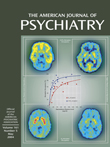Decoding the medical descriptors and criteria for even the most common of developmental disorders can pose a challenge to medical professionals and laypeople alike. In The Secret Life of the Dyslexic Child, Robert Frank seeks to provide parents and educators with practical strategies for diagnosing and managing the disorder, as well as insight into the experience of afflicted children. Approaching the issue in four parts, the text describes a child’s experience of dyslexia, offers ways for parents to think like their children, and presents strategies for action after a diagnosis is made. The author’s personal experience as having dyslexia is touted as the key element setting his text apart. Although The Secret Life of the Dyslexic Child succeeds in providing compassionate insight into the daily practical and emotional struggles of a child with dyslexia (a term interchangeable with the more au courant “reading disability”), it falls short in its efforts to offer a meaningful guide to the process of identifying and subsequently securing the appropriate resources to cope with the disorder.
Frank places a welcome emphasis on the essential role of familial confidence and unwavering support in managing a dyslexic child’s day-to-day life. Through the effective use of clinical vignettes, he skillfully illustrates the range of emotions—from frustration, through anger, to isolation—with which dyslexic children (and their families) must battle. His candid and accessible consideration of the subjective experience of a child with a reading disability—an aspect far too often overlooked—is an invaluable element of the text. This focus is clearly present throughout and is perhaps the book’s major strength.
Frank’s interest in drawing the reader into the world of the dyslexic child is readily apparent in his concentration on the experiential and emotional aspects of the condition. Consequently, the text is at its best in its creative use of exercises seeking to offer a glimpse into the inner experience of dyslexia. For example, he suggests attempting to carry on a conversation while limiting words to those containing only certain letters of the alphabet, which results in being forced to search for alternative words that may or may not convey the intended meaning. This exercise mimics the dyslexic child’s difficulty in accessing desired phonemes and the ensuing tendency to substitute words that more readily come to mind. Frank argues that making every effort to understand a child’s altered perception of the world goes a long way toward ensuring the success of implemented therapeutic efforts.
Frank effectively uses his professional and personal expertise to describe the experience of having a reading disability, but his text’s utility to parents and educators is far less apparent in the areas of diagnosis and management. The clinical description of dyslexia is inattentive to detail at best, nosologically inaccurate and misleading at worst. He identifies three types of the disorder—auditory, visual, and combined—and includes among the core symptoms of dyslexia deficits in both auditory and reading comprehension. This description seems to blur the borders between developmental dyslexia and other language-based learning disabilities, a line more carefully differentiated in other reference texts for the layperson. Sally Shaywitz, a leading dyslexia researcher, notes in
Overcoming Dyslexia (1) that developmental dyslexia is “distinguished [from other language disorders] by the unique, encapsulated nature of the phonologic weakness, one not intruding into other language or thinking domains” (p. 140). Shaywitz’s description of the signs and symptoms of developmental dyslexia conflicts noticeably with that offered in
The Secret Life of the Dyslexic Child, most obviously in its distinction between the isolated decoding weaknesses present in developmental dyslexia and the more widespread comprehension weaknesses found in other language-based learning disabilities. More startling than blurred diagnostic categories is Frank’s inclusion of symptomatic descriptors—such as difficulties with spatial orientation—described in Shaywitz’s section on myths about dyslexia. Frank’s intention may very well be to simplify the often complex diagnostic categories, but such imprecision seems a disservice to the audience he seeks to educate.
The book’s imprecision is unfortunate but less likely to prove problematic to parents than to nosologists. In contrast, the strikingly incomplete and naive discussion of the process by which parents initiate and secure special services or an individualized education program for their children is of direct concern. Federal law, codified in section 504 of the Rehabilitation Act of 1973 and the Individuals With Disabilities Education Act of 1975 (amended in 1997), requires schools to identify, evaluate, and provide for the needs of disabled children. However, the realities of fiscal and staffing constraints on public school districts around the country can make securing such legal rights an uphill battle for parents, if not outright unattainable. Consequently, in a text purporting to educate families and help them navigate the unfamiliar territory of dyslexia, vagueness in this section constitutes a serious flaw. Frank fails not only to differentiate between the services required by each law but even to mention the relevant legislation at all. As a result, critical details are never addressed—such as the timeline allowed by law between the parents’ request for an evaluation and the institution of and individualized education program or the venues of recourse should the individualized education program prove unacceptable. Frank notes that parents may opt to bring an advocate to the unfamiliar process of a school planning and placement program meeting but does not suggest the possibility of an education attorney or of nonadversarial means of due process. In fact, his description leaves the impression that schools are proactive and helpful systems—an idealistic yet unfortunately inaccurate view.
The strengths of The Secret Life of the Dyslexic Child lie in its attention to the daily emotional and practical hurdles of dyslexia. Frank’s compassionate and accessible description of the challenges faced by children with a reading disability is both informative and reassuring. The book most likely should find its niche in the hands of parents hoping to understand the lifelong journey on which they are jointly embarking with their children.

